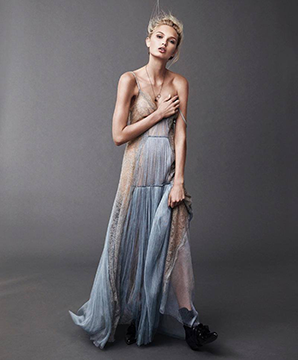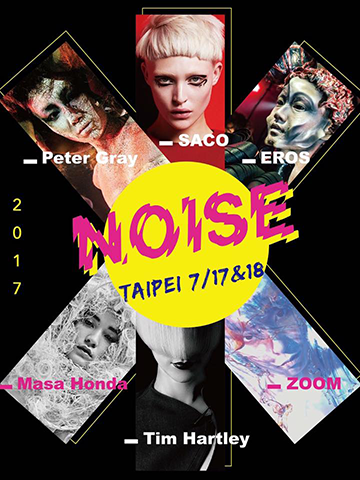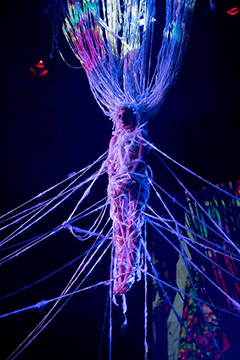Peter Gray is an editorial styling genius. But he didn’t grow up in the world of fashion – rather – he was born and brought up in Zimbabwe, and was groomed from an early age to take an academic path. “I went to a boarding school in South Africa,” he confirms. “We had strict rules and there was very little tolerance for any sort of variance.” Hairdressing ‘found Peter’ when he cut another students hair to save him from a lashing – and remarkably, the haircut “actually looked ok,” remembers Peter. From that departure grew a thriving business. “I was cutting probably 150-200 kids out of the 320 in the school (which was well over half). I had a good little business going. It was a real adventure,” he remembers fondly.

But it wasn’t until Peter was gifted ‘Cutting Hair the Sassoon Way,’ that he finally knew for certain that he had found his calling. “This is it,” he thought. “This is what I want to do.” So he went to London to learn – to master this thing called hairdressing. And at this, he has succeeded. Peter’s work as a session stylist is celebrated, worldwide. His creations appear on the pages of international fashion magazines, such as Vogue and Harper’s Bazaar, and his finely crafted styles walk down some of fashion week’s most noteworthy runways.

Discover his unique and unexpected journey, his thoughts on legacy and instant stardom, plus learn why he considers himself a craftsman – and not an artist.
Q. You moved to London to master hairdressing. What was that like?
A. “I worked my way through a couple of different companies, Toni and Guy – I got canned from there and canned from Sassoon,” he laughs. Ultimately, he says, “I ended up at a little company called Cazaly and Co., in Coventry Garden. Eugene Souleiman was working there at the time,” he recalls, “as well as Steve Moore, David Adams, Greg Cazaly (who’s a session hairdresser), John Birchall, Thomas Mckiver – you know, real legends in the industry, today.”
“There were all of these guys at this little shop in Coventry Garden and the shop had different things going on; they used to let the St. Martin students dress their windows. It was just a buzzing and creative atmosphere. We worked our backsides off, and we got rewarded. We got to go to shows and to travel. It was the late ‘80’s so London was rocking, though financially everything was in the pits. It was a mad creative atmosphere.”

Q. Today, you’re known for your skills as a session stylist. Was this always the case?
A. “When I first started, I was cutting, coloring and dressing,” says Peter, “because they were competition hairdressers, the guys I was working with.”
While I was at Sassoon, remembers Peter, “I was working for Proctor & Gamble (as much as I was working for Sassoon) doing their imaging. Very quickly I understood that in order to make a good picture, you have to cheat the results. You have to understand that two dimensions is different than three dimensions – and that what works in two dimension doesn’t necessarily work in three (and vice versa). I really enjoyed that process of interpreting that. So I ended up dressing hair, and working with Ray Allington, backstage. Based on that work, Ray said, ‘you should work in fashion.’ At the time, I was living in Manchester, which was the music hub of Europe. I was like – listen – I don’t know anything about fashion.”
“But I moved back to London, and Ray introduced me to a lot of really interesting people, and I just sort of slid into fashion while I was still teaching at Sassoon. I had no fashion background – I didn’t really understand fashion – and I had no formal training in dressing hair, so I approached it in a slightly different way. I understood how to make images for musicians, how to make album covers, because that’s what I’d been doing. That’s what I was ok with – the rest wasn’t really my world. But I loved photography, I loved the process of photography, I loved the people on sets, I loved the energy. Here I am god knows how many years later – and I’m still hammering it out.”
Q. Share your thoughts on editorial vs. behind the chair work.
A. “The editorial world is changing fast. I always say to every hairdresser that aspires to do editorial – you have to realize – that the love that you get from a [behind the chair] client, you will never get from anybody else, in your life. Once you have that bond, you really have to ‘mess up’ to shatter that. It’s an incredible bond that exists between hairdressers and their clients, and I think that a lot of hairdressers take that for granted. I think they sit back on their laurels and they don’t appreciate how special that bond is.”

Q. Describe your ‘average’ workday.
A. “I think that the amazing thing about doing the job that I do, is that every day is different – every day is noteworthy. [From day to day] you don’t interact with the same people, at all. It’s an extremely erratic industry like that. It depends on where you’re shooting, who you’re shooting with. I quite like that, because new people constantly challenge me; everyday is interesting.”
Q. How do you conceptualize your pieces?
A. “I try and approach everything in an analytical way, I try and find something that hasn’t been done before, or something that relates. The piece I did recently [in Australia, to raise awareness on the problem of human trafficking] is a great example of that.” The thought process was simple and straightforward, explains Peter. “I thought of fashion, and the cotton trade. What do we do with cotton? We grow it and it exploits labor, we then spin it. There’s a huge labor cost in producing cotton. So, we went back and we learned how to spin, and we spun 4,500 feet of hair – hand spun – two assistants and myself. We worked our butts off, you know, to create something that hadn’t been done before - to make a statement about a cause.”
“I try to always have a cause, because a lot of my work in fashion is just about making pretty images. The purpose of these images is to sell goods to people, which they already have. My business is about creating ‘aspiration’ through lifestyle, aesthetics and appeal – that’s what advertising is.”
“When I get an opportunity to do something for myself (such as the NOISE show), I first work out the analytical: What has been said before, what has been done before, what I feel needs to be said, what bears repeating. If something needs to be said again, I’m quite happy to cannibalize my own ideas. You know, I don’t hang onto ideas. A lot of people worry about people ripping them off, and I’m like, rip away! The more you rip, the more it forces me to grow, to come up with something else. It’s a great complement – it’s the best compliment. It’s a real honor and a huge privilege.”
Q. Do you consider yourself a craftsman – or an artist?
A. “I prefer to think of myself as analytical as opposed to philosophical. I love making statements, and causing people to question the status quo. I feel like, if there’s a cause and I can draw attention to it in an interesting and creative way, it’s likely to be more affective than holding a hand out and asking for money.”
But ultimately, Peter explains, he considers himself a craftsman – and not an artist. “I approach what I do – whatever I do – as a craft,” he explains. “I don’t like the word artist. Artists have so many other influences that I’m not personally comfortable with. I’m not here to judge someone who calls himself or herself an artist – though I’d like to see what they have to throw down – that’s always an interesting point,” he laments.
“People work commercially, and then call it art, and I’m like really? We need to check the definition of art, here. Our business is full of pomp and circumstance, isn’t it? I think most creative industries are.”
Q. Can you share your thoughts on ‘instant stardom?’
A. The great thing about instant stardom, says Peter, is that it’s short lived. “Everybody is a rock star, now, and they want success immediately.” It’s a bit like beauty, he adds. “When the girls I work with get nasty I tell them – remember – I’ll be doing this long after you’ve come and gone.”
“Everything now is about ’15 minutes of fame.’ Nobody considers legacy anymore. What happened to legacy,” he wonders? “What happened to being remembered? Do people honestly think that Facebook and Instagram will be around in five years time? Everything is transitioning so fast.” But, he adds, “You have to jump on the ride and see what happens.”
As a craftsperson, Peter is always working to push himself further – to hone and develop his skills. “I still test – and people want to know, ‘why do you test?’ You’re never too good to test, try and experiment,” Peter thinks out loud. “People think: I’m not working for free. And to that, I say, you’d better not work in this industry. You need a huge editorial portfolio, which is developed largely for free.”
When asked how he stays inspired, Peter wonders, “How could I not stay inspired? I get to work with some of the most incredible creative minds – not just in the business – but also on the planet. I get to collaborate with artists, musicians. It’s extremely stimulating,” says Peter. “I find going to work pretty relaxing – it’s not really work. If you enjoy something, and feel mentally and physically rewarded for it (hairdressers are, by and large, happy people), its never work,” concludes Peter.